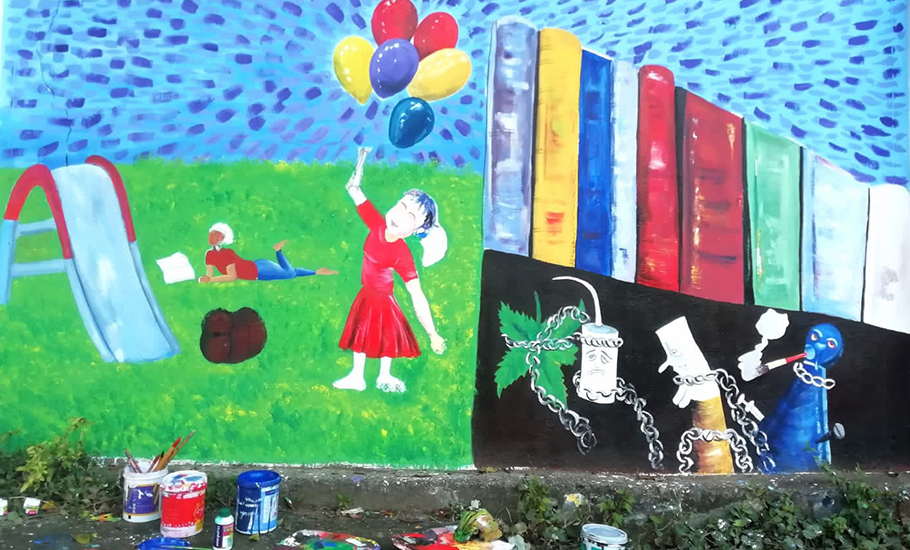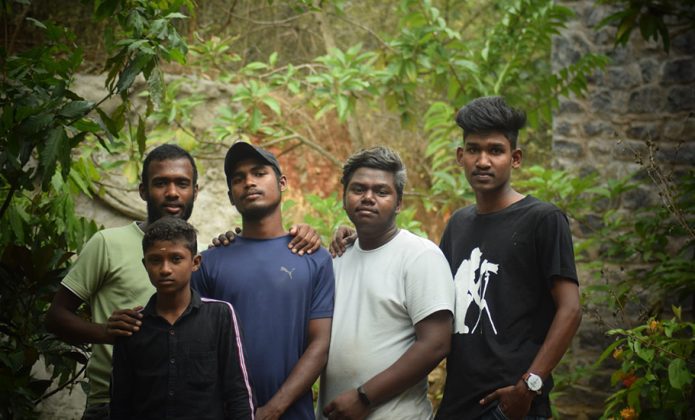
- Home
- India
- World
- Premium
- THE FEDERAL SPECIAL
- Analysis
- States
- Perspective
- Videos
- Sports
- Education
- Entertainment
- Elections
- Features
- Health
- Business
- Series
- In memoriam: Sheikh Mujibur Rahman
- Bishnoi's Men
- NEET TANGLE
- Economy Series
- Earth Day
- Kashmir’s Frozen Turbulence
- India@75
- The legend of Ramjanmabhoomi
- Liberalisation@30
- How to tame a dragon
- Celebrating biodiversity
- Farm Matters
- 50 days of solitude
- Bringing Migrants Home
- Budget 2020
- Jharkhand Votes
- The Federal Investigates
- The Federal Impact
- Vanishing Sand
- Gandhi @ 150
- Andhra Today
- Field report
- Operation Gulmarg
- Pandemic @1 Mn in India
- The Federal Year-End
- The Zero Year
- Science
- Brand studio
- Newsletter
- Elections 2024
- Events
- Home
- IndiaIndia
- World
- Analysis
- StatesStates
- PerspectivePerspective
- VideosVideos
- Sports
- Education
- Entertainment
- ElectionsElections
- Features
- Health
- BusinessBusiness
- Premium
- Loading...
Premium - Events

Cousins from Irula hamlet painting the town red. And blue. And yellow.

There are brushes, watercolour tubes, palettes scattered around the room. Tejas Vi Dev is busy finishing a painting which he has to complete over the next couple of days. It is meant for an upcoming campaign against deforestation. The 20-year-old finds himself busy most days along with three of his cousins, all from the Irula tribal community, in similar pursuits to make a living. As a...
There are brushes, watercolour tubes, palettes scattered around the room. Tejas Vi Dev is busy finishing a painting which he has to complete over the next couple of days. It is meant for an upcoming campaign against deforestation. The 20-year-old finds himself busy most days along with three of his cousins, all from the Irula tribal community, in similar pursuits to make a living.
As a child, Tejas was fond of drawing. He started drawing his favourite birds and animals on the walls of his house, using stones and tiny pieces of rocks. When he was in Class 5, a teacher introduced him to renowned artists Michelangelo and Leonardo da Vinci through a documentary. It was an eye-opener for Tejas, who decided to take art seriously. Many years of training followed. Six months ago, this 20-year-old launched a group called ‘Karoli’ with three of his cousins to make a living.
At a time when many artists in the cities struggle to make ends meet, the initiative launched by Tejas from a remote pocket – Anaikatti near Attapadi, a tribal taluk in Kerala’s Palakkad district – adds significance. The cousins travel to towns like Kottayam and Alappuzha as part of their contract work, which includes beautifying the walls with environmental messages and producing paintings for campaigns in schools.
Tejas said it was difficult for him to survive as an artist alone, and that’s why he decided to launch ‘Karoli’. “We not only make paintings and sketches, but also do wall embossing and wood-carving works. Two of my cousins are good at rock-carving and embossing wall arts. There is no room for ego among us and we work as a team,” Tejas, whose cousins Ponnarasu, Adithyan and Bharath are the other three members in the group, told The Federal.
Irulas, Kurumbas and Mudugas are the three main indigenous communities who live in Attapadi. Tejas said he was able to fine-tune his talent when he was in Class 5 itself.
“It was my teacher Arun who introduced me to the world of artists in India and abroad. He was from West Bengal. He had great ideas about art, music and cinema. He showed me documentaries and short films about veteran artists such as Michelangelo and Leonardo da Vinci. I am happy that I got proper training in drawing and sketching at Vidya Vanam Senior Secondary School in Anaikatti, where I studied till Class 10,” he said.
It was after seeing Tejas’s interest in painting that his cousins stepped in. They also started attending training sessions held in the school. When their teacher Arun left for Bengaluru, Tejas and his cousins were heartbroken. But soon a new teacher joined in and he, too, encouraged the boys, with more training sessions.
Even though the Vidya Vanam Senior Secondary School in Anaikatti – where the four studied – was instrumental in providing advanced training in arts, the cousins failed in the annual SSLC examination held in 2019.
“It’s true that we used to play a lot of football and cricket. But we don’t know how we all failed in the SSLC examination,” he said.
The failure, however, was a blessing in disguise for them. “We were very upset. But at the same time, the training sessions that we underwent in arts came to our rescue. To overcome the failure, we started doing more watercolour paintings and sketches,” said Tejas. They are now pursuing their Class 12 at the National Institute of Open Schooling (NIOS).
Tejas’s father was an anti-poaching watcher under the Tamil Nadu Forest Department and had to leave his job in 2020 due to personal reasons. His mother, who was working in an Anganwadi, couldn’t continue her job due to the pandemic-induced lockdown.

“I thought of finding a job to make ends meet, but my parents supported me. We also do farming on our land and they said it was enough for the family to survive. They asked me to go ahead with my plan,” said Tejas. However, buying materials such as brushes and colours for painting was difficult because no shops in Attapadi stocked watercolours and acrylic that Tejas wanted for his artwork.
“We would travel to Coimbatore (30 km away) to buy colours and drawing papers. It consumed a lot of time and energy. But each time, we learnt new things about the world outside. It was a great experience,” he added.
A year ago, Tejas and his cousins went to Alappuzha to see the exhibition called ‘Lokame Tharavadu’ (the world is one family), curated by Bose Krishnamachari. The exhibition, organised by the Kochi Biennale Foundation and Kerala government, showcased more than 3,000 artworks by 267 artists at six large venues spread over 3 km in Alappuzha.
“It was the first major exhibition that we four went to see together. We met veteran artist and curator of the exhibition, Bose Krishnamachari, at one of the venues. He spent a lot of time with us and encouraged us. The meeting gave us a lot of confidence,” said Ponnarasu, one of the cousins and a member of Karoli.
The four artists started getting exposure once they began moving out of town. The credit, however, goes to Prema Rangachary, director of Vidya Vanam School. “I found Tejas and his cousins showing interest in art. Tejas showed it when he was in Class 1 itself. I have launched some innovative programmes which help enhance the understanding of language and sciences through arts. We gave special training to these four youths. I knew they would do well. But it is still a beginning, they need to cover a lot of ground,” Prema Rangachary told The Federal.
It has been only six months since they launched Karoli, but the cousins are hopeful that they can do a lot through art, to educate the members in their community.
Indigenous communities like Gond, Warli and Kurumba have their own traditions when it comes to art. “As far as our knowledge goes, our community (Irulas) doesn’t have such a rich tradition in art. Our people are mostly interested in dance and music. We want to know whether this is true. We are in search of our traditional art forms so that we can recreate our artistic tradition,” said Adithyan, another member of the group. “If we couldn’t find anything, we will establish a new style of art associated with our tradition and custom,” he added.

Tejas said he has spoken to the head of villages in and around Attapadi where they will conduct workshops for students and elders. “To begin with, we want to draw paintings on the walls in remote pockets of Attapadi to create awareness among the villagers about the world they live in. The idea is to introduce arts to the cultural and social life of the Irulas,” he said.
So, what does Karoli mean?
Tejas has no concrete answer to the question. “I was searching for a name for our group and suddenly the word ‘Karoli’ appeared from somewhere. I didn’t know what it meant. So, I decided to give a meaning to the word, using it as a symbol of our unity and spirit,” he Tejas.







